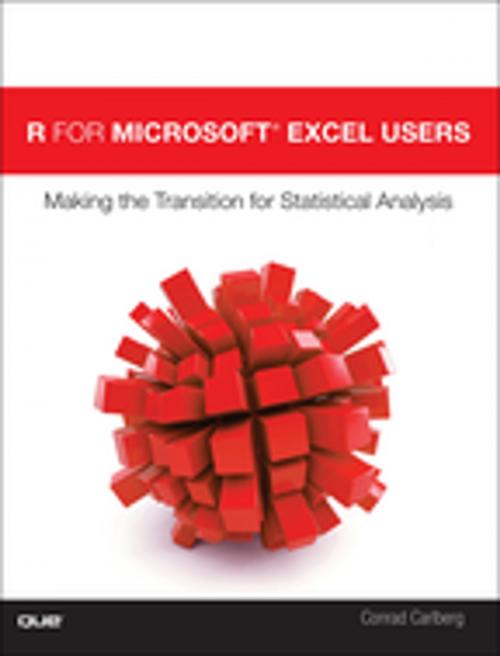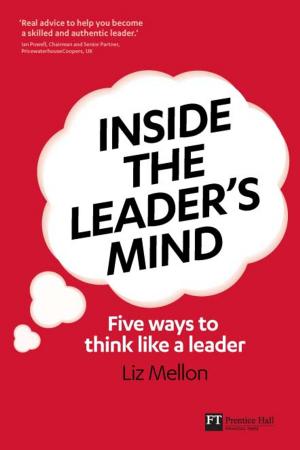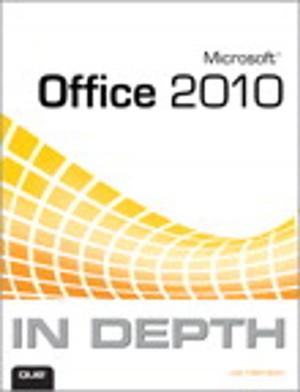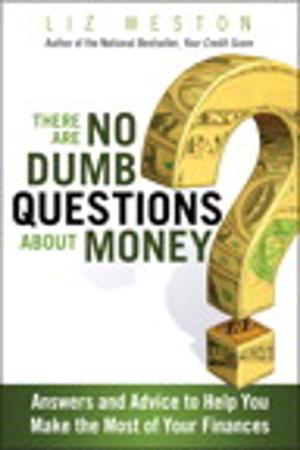R for Microsoft® Excel Users
Making the Transition for Statistical Analysis
Business & Finance, Economics, Statistics, Nonfiction, Computers, Application Software, Spreadsheets, Financial Applications| Author: | Conrad Carlberg | ISBN: | 9780134571898 |
| Publisher: | Pearson Education | Publication: | November 11, 2016 |
| Imprint: | Que Publishing | Language: | English |
| Author: | Conrad Carlberg |
| ISBN: | 9780134571898 |
| Publisher: | Pearson Education |
| Publication: | November 11, 2016 |
| Imprint: | Que Publishing |
| Language: | English |
This is the eBook of the printed book and may not include any media, website access codes, or print supplements that may come packaged with the bound book.
*** ***
Microsoft Excel can perform many statistical analyses, but thousands of business users and analysts are now reaching its limits. R, in contrast, can perform virtually any imaginable analysis–if you can get over its learning curve. In R for Microsoft® Excel Users, Conrad Carlberg shows exactly how to get the most from both programs.
Drawing on his immense experience helping organizations apply statistical methods, Carlberg reviews how to perform key tasks in Excel, and then guides you through reaching the same outcome in R–including which packages to install and how to access them. Carlberg offers expert advice on when and how to use Excel, when and how to use R instead, and the strengths and weaknesses of each tool.
Writing in clear, understandable English, Carlberg combines essential statistical theory with hands-on examples reflecting real-world challenges. By the time you’ve finished, you’ll be comfortable using R to solve a wide spectrum of problems–including many you just couldn’t handle with Excel.
• Smoothly transition to R and its radically different user interface
• Leverage the R community’s immense library of packages
• Efficiently move data between Excel and R
• Use R’s DescTools for descriptive statistics, including bivariate analyses
• Perform regression analysis and statistical inference in R and Excel
• Analyze variance and covariance, including single-factor and factorial ANOVA
• Use R’s mlogit package and glm function for Solver-style logistic regression
• Analyze time series and principal components with R and Excel
This is the eBook of the printed book and may not include any media, website access codes, or print supplements that may come packaged with the bound book.
*** ***
Microsoft Excel can perform many statistical analyses, but thousands of business users and analysts are now reaching its limits. R, in contrast, can perform virtually any imaginable analysis–if you can get over its learning curve. In R for Microsoft® Excel Users, Conrad Carlberg shows exactly how to get the most from both programs.
Drawing on his immense experience helping organizations apply statistical methods, Carlberg reviews how to perform key tasks in Excel, and then guides you through reaching the same outcome in R–including which packages to install and how to access them. Carlberg offers expert advice on when and how to use Excel, when and how to use R instead, and the strengths and weaknesses of each tool.
Writing in clear, understandable English, Carlberg combines essential statistical theory with hands-on examples reflecting real-world challenges. By the time you’ve finished, you’ll be comfortable using R to solve a wide spectrum of problems–including many you just couldn’t handle with Excel.
• Smoothly transition to R and its radically different user interface
• Leverage the R community’s immense library of packages
• Efficiently move data between Excel and R
• Use R’s DescTools for descriptive statistics, including bivariate analyses
• Perform regression analysis and statistical inference in R and Excel
• Analyze variance and covariance, including single-factor and factorial ANOVA
• Use R’s mlogit package and glm function for Solver-style logistic regression
• Analyze time series and principal components with R and Excel















